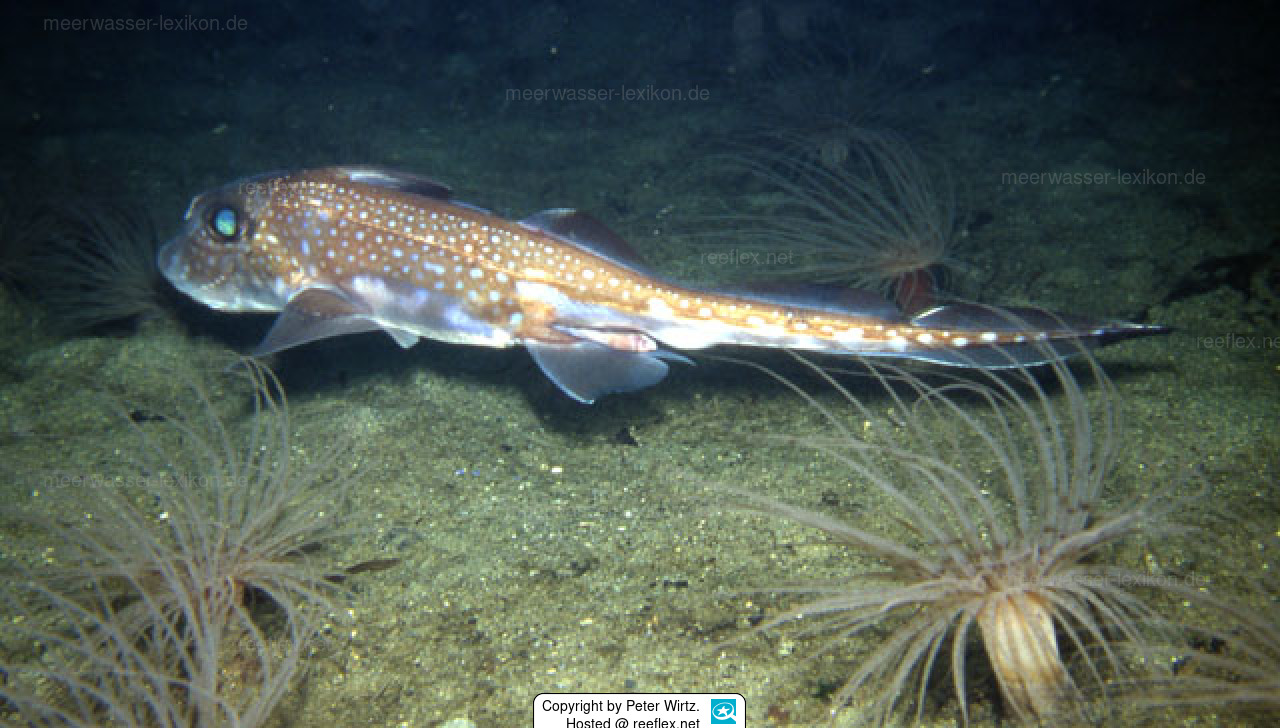Info
Distribution:
Eastern Pacific: Cape Spencer, Alaska to Bahía Sebastian Vizcaíno, Baja California (Mexico). Isolated population in the northern Gulf of California.
Biology:
Found near the bottom, from close inshore to about 913 m.
Abundant in cold waters at moderate depths.
Feed on mollusks, crustaceans and fishes,
also echinoderms and worms.
The spine can be dangerous and cause a painful wound.
Fishers are reputed to fear the jaws of the ratfish more than they do the dorsal spine.
Its flesh is edible but bland and leaves an unpleasant aftertaste.
The liver was used as a source of machine oil.
Traumatogenic!
Synonymised taxa:
Chimaera colliei Lay & Bennett, 1839
Chimaera media Garman, 1911
Chimaera neglecta Ogilby, 1888
Hydrolagus media (Garman, 1911)







 Prof. Dr. Peter Wirtz, Madeira
Prof. Dr. Peter Wirtz, Madeira


